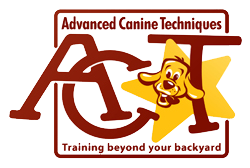If you are close minded, you may miss an opportunity to help your dog be successful.
Over the years I have met with a lot of clients that wanted to dictate the tools used on their dog. Or they were adamant about not using a certain technique. When we showed them how their dog responded, most were surprised and happy they allowed us to demonstrate.
There are numerous training methods, techniques and tools available to assist you and your dog. I encourage all owners to remain open to various suggestions and tools and don’t let family or friends influence your decision. Stand up for your dog and the tools you use, especially if they help you and your dog live your best life!
I have attended a lot of workshops and seminars over the years. I didn’t agree with everything each trainer show cased, however, I stuck it out and tucked something away from each course. Even if you don’t love the class, I guarantee you will learn something by sticking with the training each week. Just be an advocate for your dog and learn, watch, listen and modify if needed for you and your dog.
I’ve listed a few examples of absolutes I have heard and how you can use them safely.
- I am never going to feed my dog people food. (adding fruit, vegetables and proteins to your dogs’ kibble are great ways to provide additional nutrients to their food). You can also use cheese and hot dogs for training treats. Frozen pumpkin, peanut butter and cheese can be great kong or toppl stuffers and put on licki matts. Coconut and fish oil are great toppings for dry skin.
- I am never going to feed raw. There are lots of raw food options out there. Not every brand may work for you and your dog but be open to the option that for certain health conditions, raw food may be the best option to help your dog nutritionally.
- I am never going to use (insert training tool here). Again, every tool has its place IF USED CORRECTLY. The objective is to be open minded. A few good examples include a retractable leash, prong collar, head collar and E-collar. Retractable leads work great for recall when it is raining or the grass is damp. Prong collars work great to help dogs that pull and they make plastic and metal options for various coat lengths. Head collars can be useful for reactive dogs in certain situations. And Last but not least, e-collars can be helpful for communicating with your dog from a distance, useful for working with deaf dogs and giving your dog off leash freedom.
- I am never going to a dog park. I do agree that most public dog parks can be dangerous, however, they are helpful for working on focus with your dogs outside of the park. If it is a paid park that monitors membership and vet records and owners meet the same dogs regularly, then I am more open minded to that option as well. It can be a great outlet to let your dog off leash to get some energy out as long as you closely watch your dog, people pick up after them and monitor all interactions closely to keep your dog safe.
- I am never using essential oils. There are certain brands and oil combinations that can be used topically, internally and diffused to help your dog with medical issues and anxiety. The same oils can also be used for people. I do recommend getting guidance before using and only purchasing high quality pure oils. A great resource for using essential oils is Dr Janet Roark. She is a veterinarian that specializes in holistic healing. She has a website (https://essentialoilvet.com ) and facebook page https://www.facebook.com/EODVM/.
- I am never using holistic methods on my dog (chiropractic, acupuncture, massage, titer testing, etc). If your dog has an injury and traditional medicine doesn’t provide the needed help, these methods are a great addition to traditional vet care.
- I am never crating my dog. Some surgeries require crate rest. Crates are great training aids to help your puppy with potty training and management. And if you board or have your dog groomed, most places will require they have crate training.
If any of the methods above help lessen the stress of working with your dog and providing them clear and concise communication, why would you NOT want to use them?
In conclusion, keep your mind open and Never say never.

